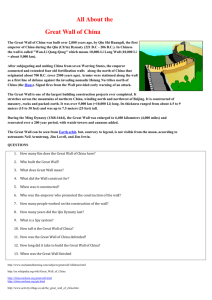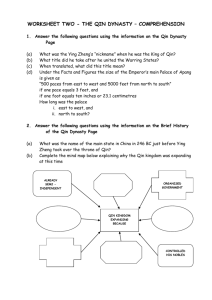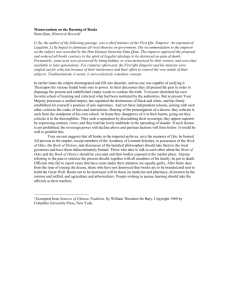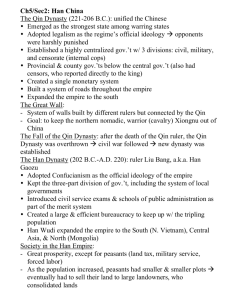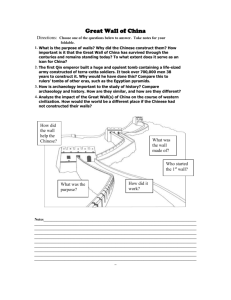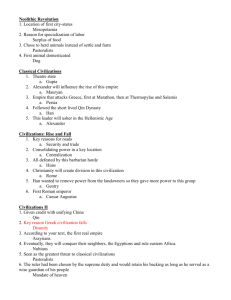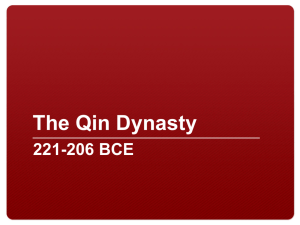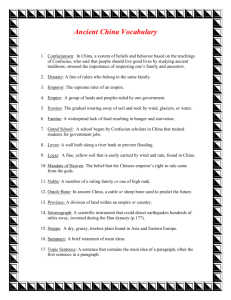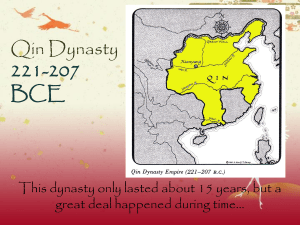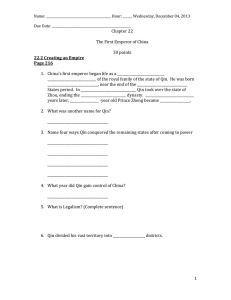Qin Dynasty (221 – 207 BC)
advertisement
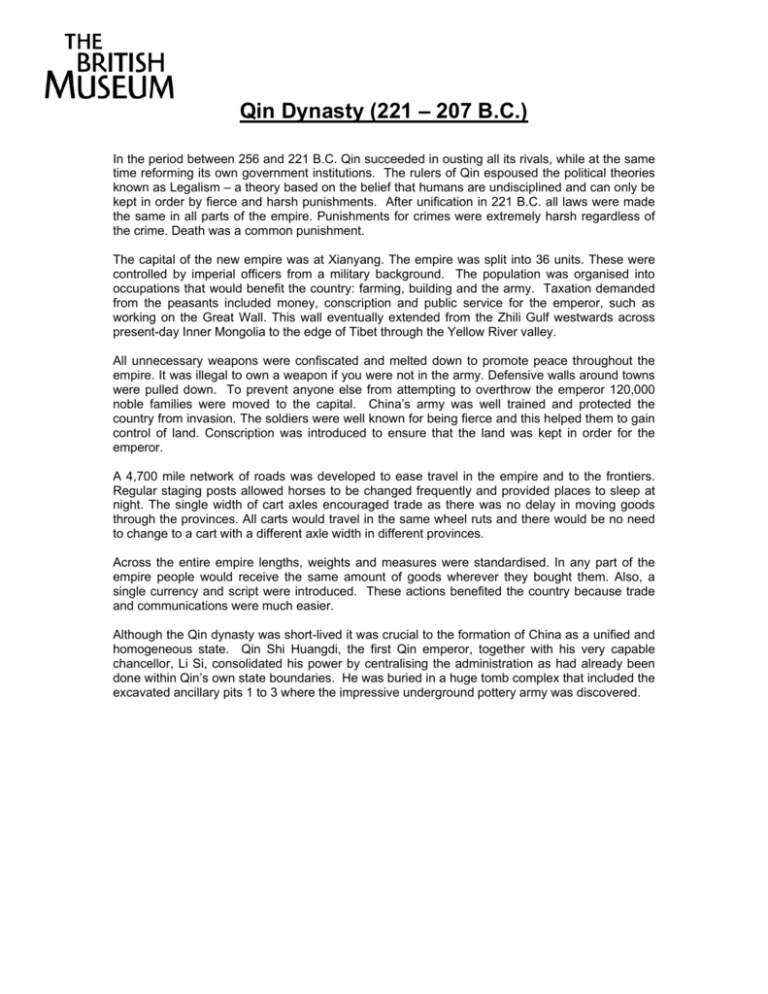
Qin Dynasty (221 – 207 B.C.) In the period between 256 and 221 B.C. Qin succeeded in ousting all its rivals, while at the same time reforming its own government institutions. The rulers of Qin espoused the political theories known as Legalism – a theory based on the belief that humans are undisciplined and can only be kept in order by fierce and harsh punishments. After unification in 221 B.C. all laws were made the same in all parts of the empire. Punishments for crimes were extremely harsh regardless of the crime. Death was a common punishment. The capital of the new empire was at Xianyang. The empire was split into 36 units. These were controlled by imperial officers from a military background. The population was organised into occupations that would benefit the country: farming, building and the army. Taxation demanded from the peasants included money, conscription and public service for the emperor, such as working on the Great Wall. This wall eventually extended from the Zhili Gulf westwards across present-day Inner Mongolia to the edge of Tibet through the Yellow River valley. All unnecessary weapons were confiscated and melted down to promote peace throughout the empire. It was illegal to own a weapon if you were not in the army. Defensive walls around towns were pulled down. To prevent anyone else from attempting to overthrow the emperor 120,000 noble families were moved to the capital. China’s army was well trained and protected the country from invasion. The soldiers were well known for being fierce and this helped them to gain control of land. Conscription was introduced to ensure that the land was kept in order for the emperor. A 4,700 mile network of roads was developed to ease travel in the empire and to the frontiers. Regular staging posts allowed horses to be changed frequently and provided places to sleep at night. The single width of cart axles encouraged trade as there was no delay in moving goods through the provinces. All carts would travel in the same wheel ruts and there would be no need to change to a cart with a different axle width in different provinces. Across the entire empire lengths, weights and measures were standardised. In any part of the empire people would receive the same amount of goods wherever they bought them. Also, a single currency and script were introduced. These actions benefited the country because trade and communications were much easier. Although the Qin dynasty was short-lived it was crucial to the formation of China as a unified and homogeneous state. Qin Shi Huangdi, the first Qin emperor, together with his very capable chancellor, Li Si, consolidated his power by centralising the administration as had already been done within Qin’s own state boundaries. He was buried in a huge tomb complex that included the excavated ancillary pits 1 to 3 where the impressive underground pottery army was discovered.
